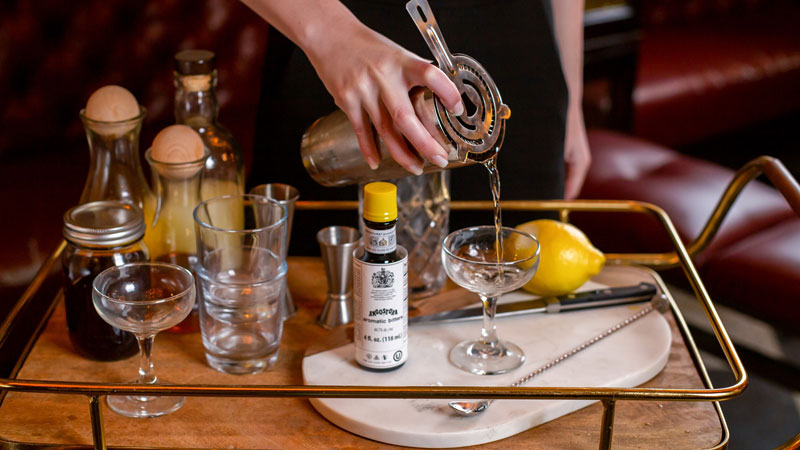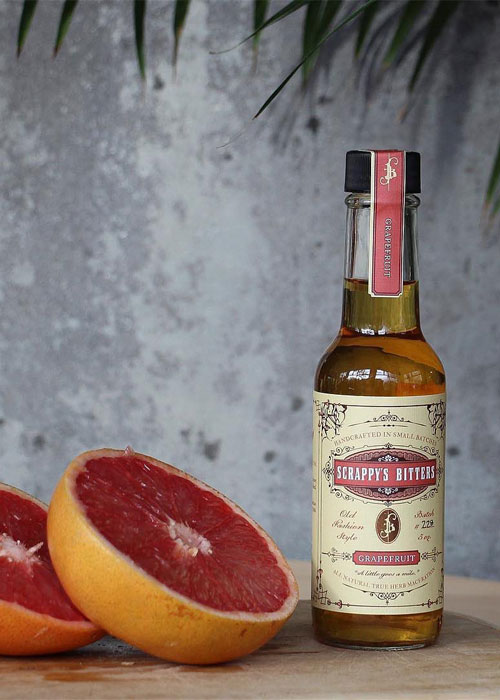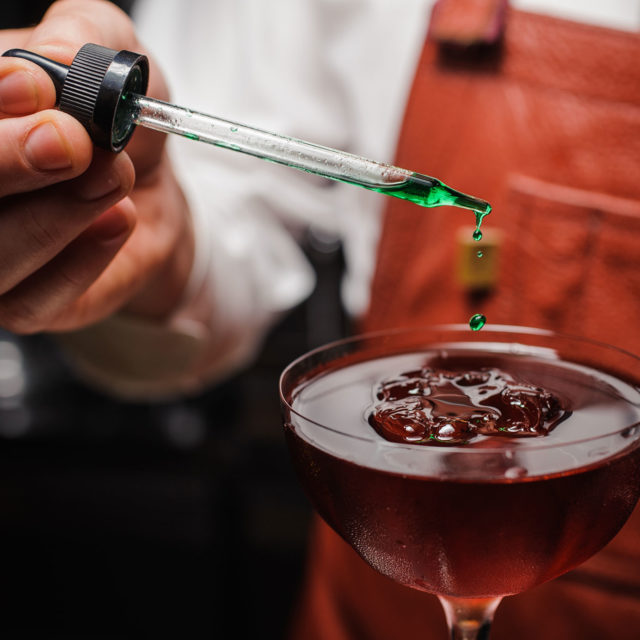The term “cocktail bitters” is both a very literal ingredient descriptor and a misnomer, as David Embury notes in his classic 1948 mixology manual, “The Fine Art of Mixing Drinks.”
“Strangely enough, while they are distinctly bitter when tasted straight, their effect on a cocktail is almost the exact reverse,” Embury writes. “A raw, sharp, acrid, bitter whisky can be smoothed out tremendously by the addition of a sufficient quantity of bitters.”
Not to be confused with potable bitters like Campari or Fernet Branca, cocktail bitters are concentrated, high-proof infusions that are made with aromatic ingredients and hold the power to significantly alter the profile of drinks with just a few drops.
With its oversized label, distinctive yellow cap, and use in classics like the Old Fashioned and Manhattan, Angostura Bitters leads the way as the most recognizable bitters brand. The anise-forward profile of the gentian-based Peychaud’s Bitters is another standout example, not least for its association with the Sazerac.
While these may be the most recognizable examples, Angostura and Peychaud’s scarcely represent two teardrops in the bitters ocean nowadays. New-aged producers such as Scrappy’s and Bittermens are pushing the boundaries of the bitter spectrum, offering every flavor imaginable, from chocolate to chili to celery to cardamom.
Modern bartenders celebrate this broad range of flavors, but in the realm of home mixology, bitters remain among the most underutilized ingredients. Whether you purchased Peychaud’s for a Sazerac or acquired Angostura for an Old Fashioned, it’s time to break free from the classics and get more from your bitters selection. The sheer list of options may seem daunting, but the trick is treating the selection like the spice rack in your pantry, and following in the footsteps of the pros.

Given the high quality of modern distilling, bartenders no longer call on bitters to smooth out the kinks of an “acrid” whiskey, as in Embury’s day. Instead, they are an essential tool in cocktail creation, used as commonly as fresh citrus juice or simple syrup. “Bitters are the seasoning holding the soup that is your cocktail together,” says Sother Teague, owner of New York’s Amor y Amargo bar and general store.
Just as it would be criminal to serve a soup without salt or pepper, Teague staunchly promotes using cocktail bitters in all manner of mixed drinks, not just classics like the Old Fashioned or Sazerac. Adding a few drops of grapefruit bitters to a Margarita, for example, has the effect of adding an extra layer to the cocktail, while also heightening the profile of the drink’s other ingredients.
Teague’s approach to using bitters is one of calculated experimentation. Be guided by the kind of flavor pairings you might find in the kitchen, he says, or work within the principles used for matching food and wine: like for like, or opposites attract. For example, spicy with more spice, or sweet and sour.
For those who appreciate a more structured approach, Teague recommends riffing on drinks that classically include bitters and that you’re familiar with. For most, this will likely be the Old Fashioned. So rather than including two dashes of Angostura, he says to turn instead to chocolate or chili bitters, or one dash of each. And don’t be afraid to push the boundaries — you can’t knock a cardamom bitters Old Fashioned until you’ve tried it.
“It’s a rare occasion that you’ll have to dump a drink because it just isn’t drinkable,” Teague says.

Brock Schulte, beverage director of Kansas City’s acclaimed cocktail bar The Monarch, seconds Teague’s recommendation of using the Old Fashioned for bitters experimentation, describing the process as “trial by repetition.” When doing so, opt for wheated bourbons (such as Larceny or Maker’s Mark) rather than those with a high rye content, he says, as their sweet, rounded profiles are more receptive to the complex bite of bitters. “They tend to be more forgiving,” he adds.
At The Monarch, Schulte uses bitters to recreate the profile of classic drinks while changing their preparation and serve. In this way, he’s reimagined the Aviation, a cocktail most recently popularized during the “craft” renaissance, which is shaken with fresh citrus juice. Schulte’s version is instead served stirred, and includes lavender bitters and a blend of powdered citric and malic acid.
It’s an admittedly complicated composition, and no doubt beyond what most home bartenders will be looking to explore. But it’s a great example of how the ingredient can be used for so much more than its bitter flavor.
Others share tips and tricks for altering the level of bitterness. Tad Carducci, a New Jersey-based master mixologist and director of outreach and engagement for Gruppo Montenegro, says adding a sprinkle of salt or a few drops of saline solution helps bring out the sweetness of other ingredients when bitters are added to a cocktail.
Another method — seemingly counterintuitive — involves using compounding ingredients, such as tonic water and lime bitters. “When one bitter element is added to another, it actually cancels some of the bitterness out,” he says.
Carducci also recommends playing around with the Old Fashioned to get a feel for working with different flavors. Rather than stopping at a dash or two, he goes as far as mixing half an ounce of bitters with 1.5 ounces of bourbon. “You get a much more expressive, intense delivery of flavor,” he says. And for a sure-fire combo that’ll always impress, Carducci points to the all-time brunch classic, the Bloody Mary. Its savory, herbaceous profile is the perfect foil for any number of flavors, he explains, “and can take a lot of punishment.”
The limit, as it may already be abundantly clear, is simply your imagination and appetite for experimentation. Or, as Teague puts it, “The only way to misuse bitters is to miss using them.”
